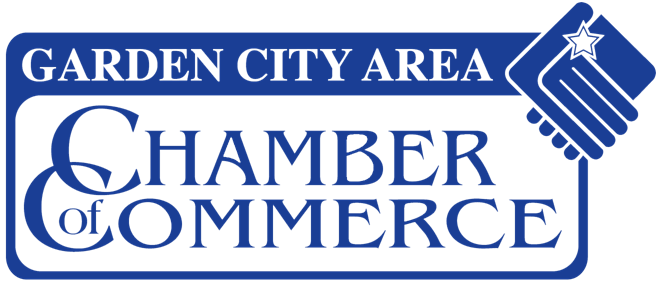Starting a restaurant is both thrilling and financially demanding. The key to long-term success often lies in how wisely you manage costs in the early stages. From choosing your business structure to optimizing supply chains and technology, every dollar counts — but every decision also builds your brand foundation.
Plan Lean, Build Smart
The first rule of cost management: start small and scale intentionally. Many restaurateurs overinvest in decor, seating, or menu variety before confirming market fit.
Checklist for lean planning:
Begin with a soft launch or limited-service model.
Rent or share kitchen space instead of purchasing.
Use pre-owned or refurbished kitchen equipment.
Focus on a concise, profitable menu first.
Negotiate short-term leases until stability improves.
Tip: Use a simple demand forecast spreadsheet to simulate different opening scenarios before committing to fixed costs.
Structuring Your Business Efficiently
Before diving into permits or suppliers, establish a solid legal and operational structure. The right business formation can protect you from liability while optimizing tax efficiency.
For example, if you’re opening in Kansas, explore how to form an LLC in Kansas to ensure your restaurant is legally compliant and protected. LLCs can separate personal and business assets, a critical safeguard during uncertain startup phases.
Also consider consulting your state’s small business development center (SBDC) for free local guidance — they often have restaurant-specific advisors.
Location: Balance Visibility and Cost
The allure of a downtown location is strong, but visibility doesn’t always require premium rent. Evaluate traffic patterns, nearby complementary businesses, and delivery logistics instead of paying top dollar for square footage.
Cost-Saving Location Tips:
-
Use footfall analytics tools like Placer.ai to analyze real-world traffic data.
-
Explore emerging neighborhoods with upcoming developments.
-
Negotiate “percentage rent” leases — where you pay a base rent plus a small percent of sales.
-
Partner with shared retail concepts or coworking kitchens.
Menu Engineering: Profit Starts on the Plate
A smaller, well-priced menu simplifies operations, reduces waste, and improves profit margins. Prioritize items that are quick to prepare, share overlapping ingredients, and have strong perceived value.
|
Menu Cost Optimization |
Action |
Expected Impact |
|
Cross-utilize ingredients |
Use core items in multiple dishes |
Lower inventory cost by 20–30% |
|
Dynamic pricing |
Adjust based on seasonal demand |
Protects profit margin |
|
Menu psychology |
Highlight high-margin dishes visually |
Boosts sales mix efficiency |
|
Supplier negotiation |
Reevaluate vendors every 6 months |
Prevents cost creep |
You can explore advanced menu pricing models using tools like SimpleOrder to track margins and supplier performance automatically.
Technology: Automate to Save
Modern tech reduces labor hours and administrative overhead. Instead of hiring large teams upfront, leverage cloud-based tools to handle reservations, payroll, and inventory.
Budget-friendly software stack:
-
POS system: Cloud-based tools like Toast or Square for small venues.
-
Inventory: Apps like MarketMan for ingredient-level tracking.
-
Scheduling: Free workforce management platforms (e.g., Homebase).
-
Accounting: Tools such as Wave for early-stage financial management.
Pro tip: Automating payroll and ordering can save up to 10–15 hours a week — freeing up time for customer experience.
Marketing on a Shoestring
Forget expensive billboards. Digital-first visibility wins in today’s restaurant world.
Low-cost, high-visibility tactics:
-
Create local SEO profiles on Google Business and Yelp.
-
Use geotargeted ads on Instagram and Facebook.
-
Partner with local micro-influencers for trade-based promotions.
-
Offer early-bird loyalty programs using free CRM tools like Loyverse.
Resource: The Restaurant Owner Community Forum shares templates and tools for marketing on limited budgets.
Staff Smarter, Not Larger
Labor can consume up to 30% of total costs. Build a versatile, cross-trained team instead of hiring by role.
Staffing Efficiency Checklist:
-
Train servers on both POS and prep duties.
-
Use “on-call” scheduling for peak days.
-
Offer bonuses for multitasking or learning new skills.
-
Implement digital shift swaps via apps like Sling to reduce no-shows.
Sustainable Supply Chains
Buying locally isn’t just good PR — it often saves money by reducing transport and storage costs. Build direct relationships with nearby farms or co-ops.
Cost-Control Practices:
-
Join purchasing co-ops to gain bulk discounts.
-
Use reusable containers to cut supply waste.
-
Schedule just-in-time inventory deliveries to prevent spoilage.
Financial Planning & Tracking
Establish cash-flow controls early.
A simple 3-statement model — revenue, expenses, and profit forecast — can prevent surprises.
Monthly Finance Tracker Checklist:
-
Track COGS weekly.
-
Review vendor pricing quarterly.
-
Compare actual vs. projected cash flow.
-
Build a 3-month emergency reserve.
Tool Tip: PlanGuru offers free forecasting templates suited for food service startups.
Common Cost Pitfalls to Avoid
-
Overspending on design before validating your menu.
-
Forgetting license and inspection fees.
-
Neglecting utility costs (they rise fast).
-
Not setting aside marketing or repair reserves.
-
Ignoring insurance coverage until an incident occurs.
FAQs: Cost Management for New Restaurateurs
Q1: What’s the average startup cost for a small restaurant?
A: Costs vary widely, but lean models like food stalls or ghost kitchens can start around $30,000–$75,000, compared to $250,000+ for traditional spaces.
Q2: Should I lease or buy equipment?
A: Leasing is smarter initially; it preserves cash flow and simplifies maintenance.
Q3: How can I test my menu before opening?
A: Host private tastings or partner with pop-up events to validate dishes before committing to full production.
Q4: Is hiring a consultant worth it?
A: A short engagement with a restaurant startup consultant can often save you more than their fee by avoiding structural errors.
Q5: How long until most restaurants break even?
A: Typically 12–18 months, depending on size, location, and marketing efficiency.
Build for Flexibility, Not Perfection
Keeping costs low doesn’t mean cutting corners — it means optimizing intelligently. Every dollar saved at launch is a dollar you can invest in refining your menu, brand, or guest experience later. By starting lean, leveraging automation, and making data-driven decisions, your restaurant can reach profitability faster — and stay resilient in a competitive market.

